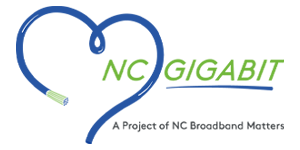Podcast: Play in new window | Download | Embed
In late October 2019, Christopher travelled to the D.C. area to attend a Broadband Communities Economic Development event and while he was there, he sat down with Executive Director Adrianne Furniss and Senior Fellow Jon Sallet from the Benton Institute for Broadband & Society. This week, we get to sit in on their conversations about the recent change at Benton from “foundation” to “institute” and about their recent report, Broadband for America’s Future: A Vision for the 2020s.
First, Christopher speaks with Adrianne, who discusses the reasons why the organization has recently changed in order to stay current with their mission and with the times. She talks a little about the history of Benton and describes some of the reasons for developing the report.
Christopher spends most of the interview with Jon Sallet, who authored the report and who has a long career in antitrust and communications. After working in D.C. in telecommunications and Internet policy for several decades, he’s seen the influence of the Internet grow. In this report, Jon analyzes stories and situations from around the U.S. and establishes a vision that will help us move forward to connect as many people as possible. He and Christopher discuss the four major factors that, if nurtured correctly, can help us integrate broadband into all sectors of society and maximize its usefulness. Christopher and Jon give special time to competition, an issue that arises repeatedly in the work at Benton and in our work at the Institute for Local Self-Reliance.
The interview will spark your interest in the report that provides more depth into the way broadband can be used as a versatile social tool. Broadband for America’s Future: A Vision for the 2020s [PDF] is filled with examples in which local communities have been able to expand local connectivity to achieve goals that went beyond better Internet access.
We want your feedback and suggestions for the show-please e-mail us or leave a comment below.
This show is 41 minutes long and can be played on this page or via iTunes or the tool of your choice using this feed.
Listen to other episodes here or view all episodes in our index.
Subscribe to the Building Local Power podcast on iTunes or Stitcher to catch more great episodes.
Thanks to Arne Huseby for the music. The song is Warm Duck Shuffle and is licensed under a Creative Commons Attribution (3.0) license.


